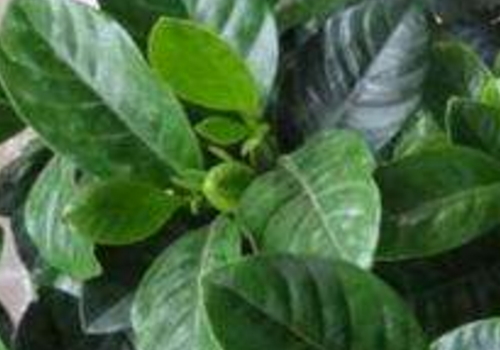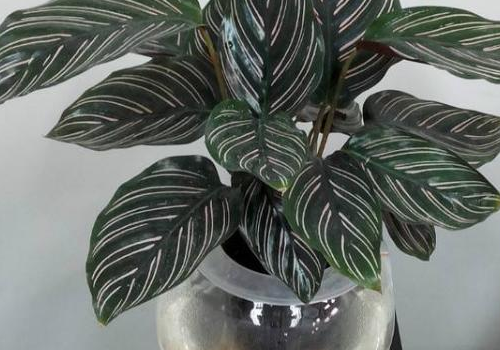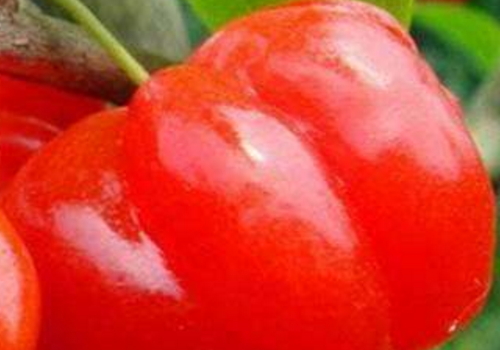Can gardenia be cultured in water? how can it be cultured in water?
Gardenia, which is a plant that many people like, is very beautiful. Can gardenia be hydroponically cultivated? How to cultivate in hydroponics?
Can gardenia be hydroponically cultured:
Gardenia can be hydroponically cultured. Gardenia likes warm, moist, well-ventilated and well-lit environment, and avoid strong light exposure. Gardenia is suitable for living in a slightly shaded place, resistant to semi-shade, afraid of stagnant water, gardenia is very suitable for hydroponic culture, hydroponic gardenia flower rooting is very fast, strong adaptability.

How to cultivate gardenia in water:
The main results are as follows: 1. Select the robust branches, the quality of the branches directly determines the growth of the plant, the branches selected by the hydroponic gardenia can choose the main stem, and there are more than three twigs on the trunk, so the gardenia hydroponics is easy to survive and the plant shape is beautiful. Because the branches of gardenia may have eggs, in order to avoid hydroponic insects, the branches of gardenia should be cleaned first and be careful not to damage the epidermis. Hydroponic branches need to be trimmed off too dense branches and leaves bitten by insects, and more than half of the larger leaves are cut across to prevent the water from evaporating too quickly, making the gardenia leaves wilt and wilt.
2. Cut the tip of Gardenia jasminoides into horseear shape, soak it in 0.1% potassium permanganate solution for 4-6 hours, take it out and insert it into clean water. The length of the water is 1x3 of the total length of the cuttings.
3. Hydroponic gardenia flowers need to use brown bottles as containers and change water every 1-2 days. Small holes can also be drilled on wood or foam boards, cuttings can be inserted into holes, and then float on the water surface. After the hydroponic gardenia flower grows new roots, it needs to be moved from the dark to a bright place, the root length is 1.5-2 cm, and the number of roots per plant is 6-7, then it can be transplanted to the pot or on the ground.
All right, this is the end of the introduction of gardenia flower hydroponics, all of you understand.
Can gardenia be hydroponically cultured? how can gardenia be hydroponically cultured?
Gardenia must be known to everyone, but for its breeding is not enough to understand, do not know how to breed, do not know whether gardenia can be hydroponic, how to hydroponic? Next, I will tell you about whether gardenia can be hydroponically cultured and how gardenia can be hydroponically cultured. I hope it can help you.
Gardenia flowers must be pruned (gardenia flowers cannot be pruned before spring sprouting, because gardenia flower buds are conceived in autumn and cannot bloom in spring). If not pruned, new leaves will only grow on the new branches after flowering. At the same time, because gardenias grow at the turn of spring and summer every year, that is, a period of time before flowering, the old leaves of the next year will yellowing and falling off, so that the bare branches of gardenia are not good-looking, only after pruning. New branches will continue to come out, making the plant grow fuller and blossom more.
Can gardenia be hydroponically cultured?
Gardenia likes warm, moist, well-ventilated and well-lit environment, and avoid strong light exposure. Gardenia is suitable for living in a slightly shaded place, resistant to semi-shade, afraid of stagnant water, gardenia is very suitable for hydroponic culture, hydroponic gardenia flower rooting is very fast, strong adaptability.
Hydroponic gardenia, first of all, to select robust branches, the quality of branches directly determine the quality of plant growth. The branches selected by hydroponic gardenia can choose the main stem, and there are more than three twigs on one trunk, so the hydroponic gardenia can easily survive and the plant shape is beautiful.
Because the branches of gardenia may have eggs, in order to avoid hydroponic insects, the branches of gardenia should be cleaned first and be careful not to damage the epidermis. Hydroponic branches need to be pruned off the branches and leaves of Inter rice and leaves bitten by insects, and more than half of the larger leaves are cut across to prevent the water from evaporating too quickly, making the leaves of gardenia wilt and wilt.
How to cultivate Gardenia jasminoides in water
1. Branch selection
Select strong branches, the quality of branches determines whether the plant can grow healthily or not. Hydroponic gardenia can choose stout trunk branches, each trunk retains more than 3 twigs, such branches are easier to survive in hydroponic culture, and the plant type is beautiful.
2. Deal with
Gardenia branches may contain eggs, in order to avoid hydroponic insects, before hydroponic culture, rinse the branches with clean water and be careful not to damage the epidermis. After cleaning, cut off the overdense branches and leaves that have been bitten by worms, and cut them in half when the leaves are larger, so as to prevent the water from evaporating quickly and wilt the gardenia.
3. Hydroponics
Cut the treated branches into horseear shape, soak them in 0.1% potassium permanganate solution for 4-6 hours, take out and insert into clean water, the length of the water is 1 inch 3 of the total length of the cuttings.
4. Maintenance
It is best to choose a dark container in the initial stage of hydroponic gardenia, and change the water once every 1-2 days. After taking root, it can be changed into a transparent container. Or choose to drill some small holes in the foam board, insert the branches into it, and float the foam on the water.
When the root grows to 1.5 cm, and there are 6-7 roots on a single plant, it can be moved to the pot or planted on the ground.
Can gardenia be hydroponically cultivated? Experience sharing of hydroponic Gardenia jasminoides
There are many ways to reproduce gardenia. recently, many flower friends want to try hydroponic culture of gardenia, but they do not know whether gardenia can be hydroponically cultivated, and what is the hydroponic method of gardenia. Gardenia can be hydroponically cultivated. In fact, hydroponic culture here also includes hydroponic insertion. Water culture is always water culture, water planting is to keep the branches of gardenia in water for a period of time to take root, then transplant them to the soil in the pot, when you are sure what you are looking for.
1. Gardenia flower in water
Water insert gardenia (mostly for reproduction): first say some inspirational words, gardenia water insertion is very easy to take root, the success rate is very high.
The best time: generally speaking, gardenia can be carried out as long as the temperature is above 20 degrees. Relatively speaking, summer is the most suitable, and flower friends can refer to the local climate.
Choice of branches: according to the successful experience of flower friends, the water cutting branches of gardenia are not very strict, and the best piece of paper is a branch with more than three twigs on the trunk. This kind of branch is easy to insert, grows best after potting, and the plant type is also very beautiful. There is no need for pruning in the first year.
The choice of water: it is best to choose mineral water, the water quality is not easy to deteriorate.
The choice of utensils: this is relatively simple, mineral water bottles, beer bottles are fine.
Finally, summary: gardenia branches in the treatment, the break, to be cut flat, generally speaking, water insertion for about 2 weeks can have signs of rooting, some time is longer, to be patient, in addition, in the process of water insertion, if there are leaves yellow, do not mind it, this does not prevent gardenia branch rooting.
Hydroponic Gardenia jasminoides
Hydroponic culture of Gardenia jasminoides (the purpose is to be clean and tidy, a different way of maintenance)
Hydroponic gardenia, first of all, to select robust branches, the quality of branches directly determine the quality of plant growth. The branches selected by hydroponic gardenia can choose the main stem, and there are more than three twigs on one trunk, so the hydroponic gardenia can easily survive and the plant shape is beautiful.
Because the branches of gardenia may have eggs, in order to avoid hydroponic insects, the branches of gardenia should be cleaned first and be careful not to damage the epidermis. Hydroponic branches need to be pruned off the branches and leaves of Inter rice and leaves bitten by insects, and more than half of the larger leaves are cut across to prevent the water from evaporating too quickly, making the leaves of gardenia wilt and wilt.
3. Culture methods of Gardenia jasminoides in hydroponics.
For hydroponic culture of Gardenia jasminoides, 10-12cm annual branches and 2-4 leaves should be taken. Cut the tip of Gardenia jasminoides into horseear shape, soak it in 0.1% potassium permanganate solution for 4-6 hours, take it out and insert it into clean water. The length of the water is 1x3 of the total length of the cuttings.
Hydroponic Gardenia jasminoides needs to use a brown bottle as a container and change water every 1-2 days. It can also drill small holes in the wood or foam board, insert cuttings into holes, and then float on the surface. After the hydroponic gardenia flower grows new roots, it needs to be moved from the dark to a bright place, the root length is 1.5-2 cm, and the number of roots per plant is 6-7, then it can be transplanted to the pot or on the ground.
Conclusion: the above is the introduction of the knowledge of gardenia hydroponics. I hope it will be helpful to everyone.
- Prev

How to dry and curl the leaves of double-line bamboo taro? can you raise them in water?
Double-line taro, which is also a kind of plant, is known to many people, so what about the dry and curly leaves of this double-line taro? Can it be raised by water: what to do about the dry and curly leaves of double-line taro: spray more water during the growing period, the leaves of double-line taro are larger, and water evaporation is faster, so it should be watered in time.
- Next

How to plant red fruit bonsai and how to reproduce
Red fruit is relatively rare, but some people like to plant it. How to grow red fruit bonsai? How do you breed? How to plant red fruit bonsai: 1. Soil: potted red fruit can be mixed with 5 parts of humus soil, 3 parts of garden soil and 2 parts of sandy soil, and mixed with a small amount of phosphorus and potassium fertilizer such as calcium superphosphate and bone powder.
Related
- Fuxing push coffee new agricultural production and marketing class: lack of small-scale processing plants
- Jujube rice field leisure farm deep ploughing Yilan for five years to create a space for organic food and play
- Nongyu Farm-A trial of organic papaya for brave women with advanced technology
- Four points for attention in the prevention and control of diseases and insect pests of edible fungi
- How to add nutrient solution to Edible Fungi
- Is there any good way to control edible fungus mites?
- Open Inoculation Technology of Edible Fungi
- Is there any clever way to use fertilizer for edible fungus in winter?
- What agents are used to kill the pathogens of edible fungi in the mushroom shed?
- Rapid drying of Edible Fungi

